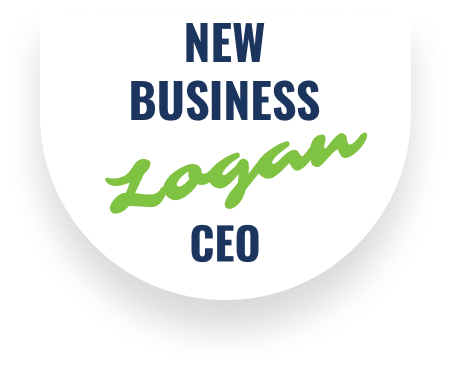By Logan Fahey, CEO Robin Autopilot, USA
The future is electric, and there is no disputing that. I have seen this evolution take place since I first became involved in the green industry in 2009. That’s when I developed Lennox Grounds Management, a Northeast Ohio residential and commercial landscaping company, which we later sold in 2012. Today, our firm (Fahey Group) owns and operates several businesses in the green industry including Landmark, a wholesale lawn and garden store and all-electric dealership; Robin Autopilot, USA, the developer of multi-manufacturer fleet management software and GPS tracking solutions; and MowBot, Inc., a national network of Robots as a Service (RaaS) operators.
Over the last decade, I’ve learned a lot about the industry and the do’s and don’ts of converting a business from gas to electric and from manual to robotic. For example, when it comes to equipment, there are several questions to consider when converting from gas to electric:
- Infrastructure:
- Do you have the right electrical infrastructure to charge the number of batteries needed to power your equipment?
- Is your trailer/truck equipped to charge batteries throughout the day or take advantage of mobile charging points?
Pro Tip: Work with your local electrician to spec out your shop and begin the process of understanding how much additional power you may need to run a successful electric business.
- Fleet management:
- Gas is very different from electric – do you have the fleet management tools to monitor the battery levels and health of your equipment across manufacturers and ensure that crews are ready to go first thing in the morning? Forgetting to charge can destroy an entire day’s route.
Pro Tip: If you use one manufacturer (e.g., Southwest model) you can use the in-house fleet management tools (e.g., Husqvarna). If you’re looking to use multiple brands and integrate the software with your ERP system, you should explore a multi-manufacturer fleet system like Robin Autopilot.
- Gas is very different from electric – do you have the fleet management tools to monitor the battery levels and health of your equipment across manufacturers and ensure that crews are ready to go first thing in the morning? Forgetting to charge can destroy an entire day’s route.
- Capital costs:
- Have you compared the costs of gas versus electric?
- Have you evaluated leasing versus purchasing?
- Do you qualify for the new tax credits or subsidy/grant dollars available at the national, state and local levels?
Pro Tip: Use this calculator to help compare costs. Schedule a consultation with our in-house legal aid to help evaluate whether you qualify for tax credits/subsidies.
Converting from manual equipment to robotics also comes with a variety of questions that need to be answered. Robotics have come a long way over the last decade and can provide many benefits, such as reducing headcount, improving cutting efficiency and decreasing a company’s carbon footprint. However, converting to robotics can also backfire on a company if it is not done correctly. To ensure that doesn’t happen, here are some items to consider:
- Be sure to choose the right robotic lawn mower for the property. There are many different manufacturers to choose from: Husqvarna, Stihl, ECHO, Honda, Toro, Greenzie, Scythe, Kress, Worx, GreenWorks, Green Machine, NexMow, etc. Choosing the right one depends on your answers to the following questions:
- How big is the property?
- Should the mower be semi-autonomous or fully autonomous?
- Which would be more beneficial, wired or wire-free technology (boundary wire or GPS/RTK)?
- What type of grass will the mower be used on?
- What is the climate like at the location?
Pro Tip: Start with a brand that is proven and reliable – Husqvarna, Worx, ECHO, Greenzie – and be careful of start-ups with unproven technology.
For smaller properties, use Husqvarna and Worx (under one acre), and use wired technology.
For larger properties (one acre and above), use Husqvarna and Greenzie. If the area is wide open (no tree cover or buildings nearby), use EPOS/wire-free technology.
For commercial crews, consider semi-autonomous (e.g., Greenzie), which allows you to map out the border of the property manually, and then the mower will strip the middle. This is good for large open spaces.
For grass type – just be careful not to use low-cut mowers for high-cut grass (e.g., Saint Augustine).
- Consider various items related to capital costs to determine the best solution for your business:
- Subscription-based?
- Pay per acre?
- Financing options?
- Lifetime value of the equipment?
- Amount saved on fuel, labor, insurance, vehicles, etc.?
Pro Tip: The lifetime of a mower ranges from 5 to 10 years (depending on the brand), so financing the mowers at 36 or 48 months, if possible, would have the greatest ROI. Subscription or acre-based programs can be a good solution if you are looking to keep the debt off of your balance sheet, but you would also pay 40%+ more for the units over time under these programs.
- You also must decide how to charge the customer:
- Upfront?
- Subscription?
- Per acre?
Pro Tip: Similar to the capital costs discussion above, you’ll make more money under a subscription program for your customer, but you’ll also carry the debt. If you sell the unit upfront, you’ll have more immediate cash flow, but you will make significantly less profit over the long term.
In conclusion, there are lots of data points to consider when converting to electric or robotic (or both). Therefore, it’s best to develop a strategic plan before fully implementing electric and autonomous equipment into your fleet. I highly recommend starting with a single crew and doing a pilot for 6+ months – one of the most important factors is having a foreman or crew leader who gets behind the change management strategy.
Converting from gas to electric and/or manual to robotic can be highly beneficial, but the issues can also be complex. If you’re thinking about making this exciting conversion, we’re here to help you do it in the best way to grow your business.
/L
 Call for an quick estimate
Call for an quick estimate 




.svg)

